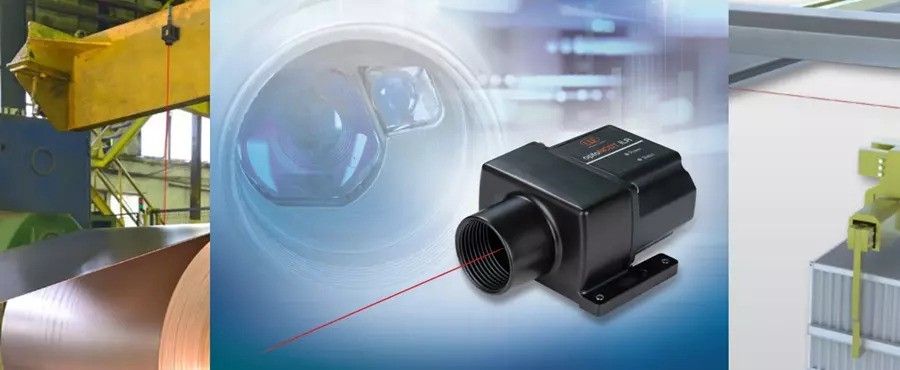New enhanced laser sensor accurately measures distances to difficult surfaces or target objects up to 150 metres away

Developed in-house by Micro-Epsilon, the new optoNCDT ILR 3800-100 is the successor to the ILR2250-100 laser distance sensor. The ILR3800-100 has a very high signal stability on various surfaces. The sensor measures accurately on difficult surfaces such as dark, structured or weakly reflecting objects. Without any special adaptations to the target, the sensor has an impressive range up to 100m. Adding a reflector to the target extends the range to 150m. A mounting plate ensures quick and easy changeover to the new sensor model. The connector on the new device is changed from M16 to the more common M12 and replacement with existing units is solved using an adapter.
The factory default AUTO measurement mode allows precise and reliable measurements to be made on targets over great distances. Additional modes are also available to tune the sensor to specific application requirements.
The ILR3800-100 is suitable for a wide range of applications, from transport, logistics and conveyor systems, to automation, metal processing, production monitoring and unmanned drones or vehicles. It has already found uses in monitoring large coil diameters, silo filling levels and gantry cranes. The combined long range and high accuracy of the sensor has also found particular benefits in the measurement and control of diameters for hot ring rolling.
In terms of its technical performance, the sensor is unsurpassed in its field, providing excellent repeatability (<300µm), resolution (0.1mm) and linearity (< ± 1mm), resulting in extremely stable measurements and excellent signal stability. The sensor’s small footprint (102 x 53 x 50mm) and weight (254g) represent a 65% reduction in size and weight compared to its predecessor, allowing it to be easily installed in narrow or restricted spaces in production lines and machines.
The optoNCDT ILR3800-100 can provide continuous measurement output via a 16-bit, scalable, 4-20mA analogue output or via RS422 serial communication. A trigger input provides opportunities to control when the sensor takes a reading. Furthermore, options will also be available to support direct industrial network communications such as IO Link, EtherCAT, ProfiNET and Ethernet/IP.
Source: Article | Micro-Epsilon



